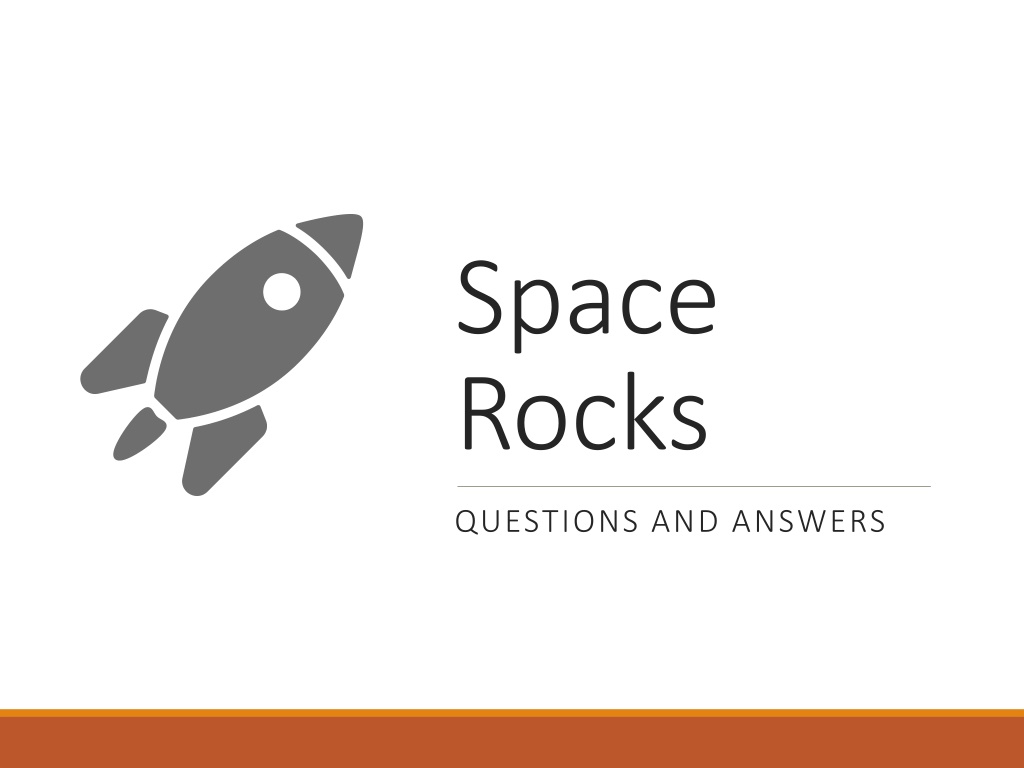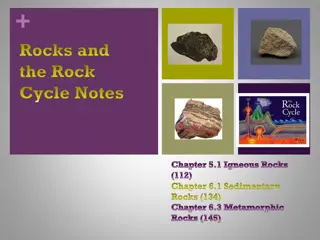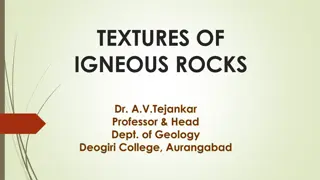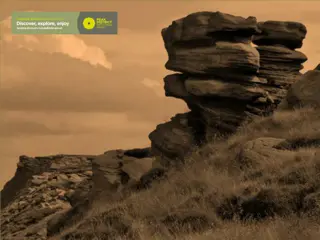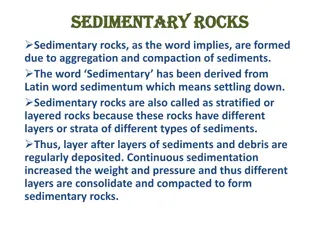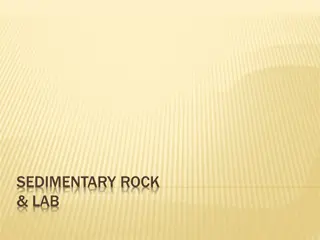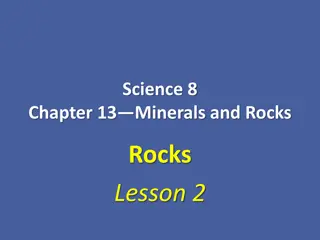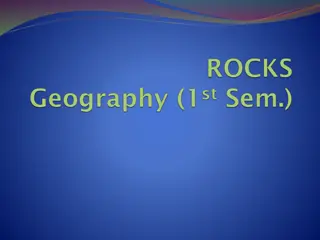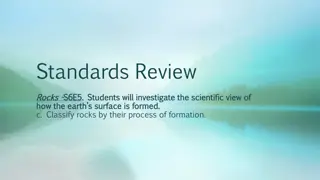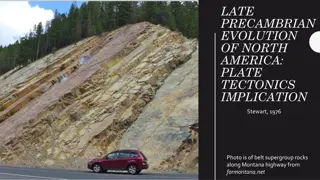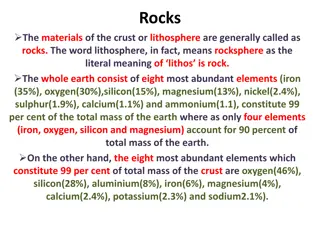Exploring Space Rocks: Questions and Answers
Delve into the fascinating world of asteroids, comets, and meteorites with answers to intriguing questions such as the frequency of asteroid impacts, the impact on various celestial bodies, the history of asteroid collisions with planets, and more. Learn about meteorites, meteors, and cosmic impacts that have shaped our solar system.
Uploaded on Oct 07, 2024 | 0 Views
Download Presentation

Please find below an Image/Link to download the presentation.
The content on the website is provided AS IS for your information and personal use only. It may not be sold, licensed, or shared on other websites without obtaining consent from the author. Download presentation by click this link. If you encounter any issues during the download, it is possible that the publisher has removed the file from their server.
E N D
Presentation Transcript
Space Rocks QUESTIONS AND ANSWERS
Do large or small asteroids hit the Earth more frequently? a. Large asteroids strike more frequently b. Small asteroids impact more frequently c. All asteroids hit the Earth at the same rate
Which is hit the most by the smallest particles from asteroids and comets? a. Earth b. The Moon c. Mars
Which does an asteroid hit the fastest? a. Earth b. The Moon c. Mars
Where did an impact cause a mass extinction? a. Earth b. The Moon c. Mars
How long have asteroids been hitting the planets? a. 10 thousand years b. 5 million years c. 4.5 billion years
Which hits the Earth most frequently? a. Comets b. Asteroids c. Both hit the Earth at the same rate
We have not found meteorites on Earth from a. The Moon b. Mars c. Venus
Which does not have meteors? a. The Moon b. Mars c. Earth
On Earth, where do meteorites fall? a. North America b. Antarctica c. Everywhere
When do meteorites fall? a. At night b. During the day c. All the time
What is a meteor? a. A rock from space b. A streak of light in the sky c. A star that explodes
What is a meteorite? a. A rock from space that has landed on Earth b. A rock on another planet c. A small asteroid
What is a shooting star? a. A star that explodes b. Another name for a meteor c. A piece of a star
What is a meteoroid? a. A rock that has landed on Earth b. Another name for a meteor c. A particle or rock in space
Why does a meteor glow? a. Meteoroids glow white-hot in our atmosphere b. Meteoroids ignite our atmosphere c. The air around the meteoroid is ionized
How fast does a meteoroid move in our atmosphere? a. Around 50 thousand miles per hour b. About 30 miles per hour c. Approximately 100 miles per hour
What is an asteroid? a. A rocky body less than a thousand km wide b. A type of star c. A rock that has landed on Earth
Which of these is not an asteroid? a. Ceres b. Mars c. Vesta
What causes meteor showers? a. Earth passes through a trail of comet dust b. Asteroids explode above our atmosphere c. Rain forms due to an asteroid impact
What are the different types of meteorites? a. Fast and slow b. Icy, rocky, and iron c. Stony, iron, and stony-iron
What do most meteorites look like? a. Silver, round, and red b. Dark and irregular-shaped c. Black and shiny
Which is a meteor shower? a. The Perseids b. The Katydids c. The Lemonids
What makes an impact crater? a. A comet or asteroid exploding on the surface b. A meteorite melting the surface c. An asteroid bouncing off the surface
What are the types of asteroids? a. Round, Oblate, and Irregular b. Carbon-rich, Stony, and Metallic c. Icy, Sandy, and Rocky
Asteroids do not have a. Craters b. Storms c. Ice
Where do most meteorites come from? a. The Moon b. Asteroids c. Andromeda
What is another name for a meteorite from the Moon? a. Brie b. Moonite c. Lunaite
How fast does a rock need to go to escape from the Moon s gravity? a. 1.5 miles per second b. 15 miles per hour c. 100 miles per hour
How many meteorites have we found from the Moon? a. About 4 b. About 400 c. About 40,000
Where on the Moon do lunar meteorites come from? a. The Maria b. The Highlands c. All over the Moon
How many lunar meteorites were seen falling as a meteor? a. 0 b. 10 c. 15
A lunar meteorite has never been found on which continent? a. Antarctica b. Africa c. North America
In what year was the first identified lunar meteorite found? a. 1701 b. 1981 c. 2019
Which asteroid is the OSIRIS REx mission orbiting? a. Vesta b. Ceres c. Bennu
Which of these asteroids has been identified as the source for many meteorites? a. Vesta b. Ceres c. Bennu
How fast does a rock need to go to escape from the gravity of Mars? a. 3 miles per second b. 30 miles per second c. 300 miles per second
How many meteorites have we found from Mars? a. 12 b. 224 c. 4,048
Which type of Mars meteorite was found in Shergotty, India? a. A Nakhlite b. A Chassignite c. A Shergottite
Many meteorites on Earth came from when Vesta_________ . a. Was hit by another asteroid a billion years ago. b. Had an enormous volcanic eruption. c. exploded.
Iron meteorites come from ________ . a. The cores of shattered planetary bodies. b. Iron asteroids. c. Mars.
About how old are the oldest Mars meteorites? a. Under 4 thousand years old b. About 4 million years old c. Over 4 billion years old
Mars meteorites with NWA in their names were found in _________ . a. Northwest Africa b. Northwest America c. Northwest Antarctica
After leaving Mars, how long did meteorite Dhofar 019 spend in space? a. 3 years b. 20 million years c. 4 billion years
Which helps identify meteorites from Mars? a. Their weight is lighter. b. The color is redder. c. The gas composition matches Mars .
